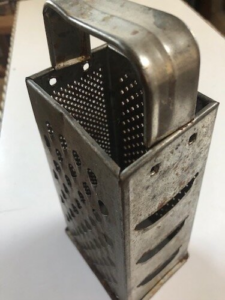Grating Made Easy: A Guide to Graters
Graters have been a staple kitchen tool for centuries, providing simple and efficient ways to grate vegetables, cheese, and other ingredients. They come in various sizes and shapes, each designed to meet specific grating needs. In this article, we will explore the history, types, and uses of graters, as well as some tips on how to choose and care for them.
History of Graters

The history of graters traces back to ancient times when people used rough stones to grate and grind food. The first known graters made of metal were found in Pompeii, Italy, which was buried by volcanic ash in 79 AD. These graters were made of bronze and were likely used to grate hard cheeses and spices.
In the Middle Ages, graters became popular in Europe, mainly for grating spices and herbs. The graters were made of tin, and the grating surface was made of small holes punched into the metal. In the 18th century, graters were made of more durable materials, such as stainless steel, and became widely available to the general public.
Types of Graters
There are several types of graters available, each designed to meet specific grating needs. Here are the most common types of graters:
Box Graters: Box graters are the most common type of graters that feature four different grating surfaces – coarse, medium, fine, and slicing. The box grater is designed to be held upright while grating, and the grated ingredients fall inside the box.
Microplane Graters: Microplane graters are the newest addition to the graters family. They have razor-sharp teeth that are perfect for grating hard cheeses, ginger, garlic, and citrus fruits. Microplane graters are also perfect for grating chocolate and nutmeg.
Rotary Graters: Rotary graters are designed to be hand-cranked, and they feature a grating drum that can be removed for easy cleaning. They are perfect for grating hard cheeses, nuts, and chocolate.
Mandoline Graters: Mandoline graters are designed to slice vegetables and fruits quickly and efficiently. They feature a flat surface with a sharp blade that can be adjusted to varying thicknesses.
Electric Graters: Electric graters are perfect for those who need to grate large quantities of ingredients quickly. They come with different grating disks that can be changed to achieve different grating sizes.
Uses of Graters
Graters are versatile kitchen tools that can be used for a wide range of tasks, including:
Grating Cheese: One of the most common uses of graters is grating hard and soft cheeses, such as Parmesan, cheddar, and mozzarella. Grated cheese is perfect for adding to pizzas, pasta dishes, and salads.
Grating Vegetables: Graters can be used to grate vegetables, such as carrots, cucumbers, and zucchini, for salads, soups, and stir-fries.
Grating Spices: Graters can be used to grate spices, such as nutmeg, cinnamon, and ginger, for adding flavor to dishes.
Grating Citrus Fruits: Grating citrus fruits, such as lemons and limes, can add zest and flavor to dishes.
Grating Chocolate: Grating chocolate is perfect for adding to baked goods, such as cakes, cookies, and brownies.

Choosing and Caring for Graters
When choosing a grater, consider the type of ingredients you will be grating and the frequency of use. Here are some tips on how to choose and care for graters:
Material: Graters are made of various materials, including stainless steel, ceramic, and plastic. Stainless steel graters are durable and easy to clean, while ceramic graters are perfect for grating hard cheeses and vegetables. Plastic graters are lightweight and easy to use.
Size: Graters come in different sizes, so choose one that fits your grating needs. For example, a microplane grater is perfect for grating small ingredients, while a box grater is perfect for grating large quantities of ingredients.
Cleaning: Graters can be challenging to clean, especially if food gets stuck in the grating holes. Use a soft-bristled brush to remove any food particles, and avoid using harsh detergents that can damage the grater.
Storage: Keep your grater in a dry place to prevent rusting and corrosion. Store it in a protective sleeve or container to prevent accidental injury.
Conclusion
Graters are essential kitchen tools that have been used for centuries to grate cheese, vegetables, and other ingredients. They come in various types and sizes, each designed to meet specific grating needs. When choosing a grater, consider the type of ingredients you will be grating and the frequency of use. Remember to clean and store your grater properly to ensure it lasts for years to come.